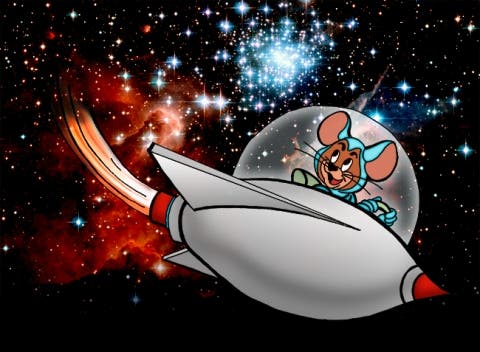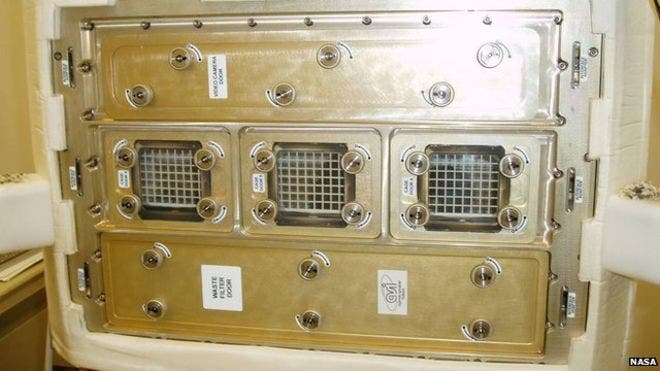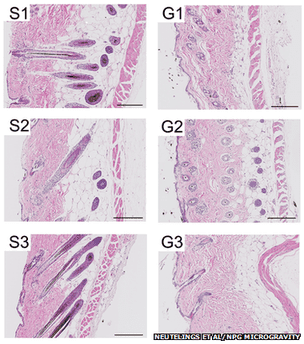Six mice were spent 91 days on board the Internationals Space Station in 2009, or seven years in the life of a mouse. Comparing their tissue characteristics with mice living in the same conditions, only on Earth, researchers found micro-gravity induces some peculiar biological changes. For instance, the mice’s skin was thinner and their hair grew more. Like humans, mice too suffer from muscle and bone atrophy in micro-gravity, which prompted scientists to consider them as reliable models for studying the effect of living in space for extended periods of time. Previously, human astronauts have complained about skin dryness and irritation and these latest findings seems to suggest that these may indeed be caused by micro-gravity.

The study is one of 20 experiments looking at various parts of the mice to measure the health effects of zero-g. Of the six mice delivered to the ISS in August 2009 by the Discovery shuttle, only three survived and were returned home safely. The mice lived in special containers, each sealed from one another. Feeding, air and waste was management by an automatic system and astronauts were merely tasked with watching over them. Six other mice, living in exact conditions, were kept for the same time frame in lab back on Earth.

Dr Betty Nusgens from the University of Liege in Belgium is one of the authors involved in the study. She and colleagues collected and analyzed samples taken from the space mice and compared them to those living in the replica drawer system. The outer layer of the skin was much thinner than normally. Also, some peculiar changes occurred in their hair follicles. Typically, hair cycle growth consists of growth, rest, growth. But the mice’s fur grew without rest, and the researchers don’t know how or why this happens. Genetic analyses showed changes in how the space mice were creating skin and hair proteins, suggesting that weightlessness disrupts the skin at the level of DNA and RNA – this is the prime suspect so far.
“The main finding is that the skin of the mice that spent three months on the ISS became thinner than the control mice remaining on the ground,” Dr Nusgens said.

There were also some changes associated with the layer of muscle located directly under the skin. Humans, however, don’t have this muscle layer, nor do they have that much hair covering their bodies for that matter. The effects on the skin seem to resemble those reported by the astronauts, however.
Of course, three mice is such a small sample size and results should be interpreted cautiously. Back on Earth, no journal would have accepted it for publishing, but these are extreme conditions. You don’t get to put mice on the ISS too often, not to mention for that long. It’s, in fact, the longest any non-human animal has stayed on the space station. Mice are interesting for this sort of research since time flows differently for them than for humans, biologically speaking. In those 91 days, the mice aged the equivalent of seven human years, so studying the effects of long-term exposure to micro-gravity is a lot more effective. Apart from ants, no one seems to be fairing really well in space. If we’re to ever to become an interplanetary species, we first need to understand very well what happens to our bodies under different environmental conditions. And if you thought micro-gravity sounds though, well wait until you hear about cosmic radiation. Aboard the ISS, the radiation is still rather dim and under control, but on-route to Mars or farther out radiation becomes a huge concern, as it can incur permanent brain damage. There’s no way of shielding astronauts against it; not yet.






